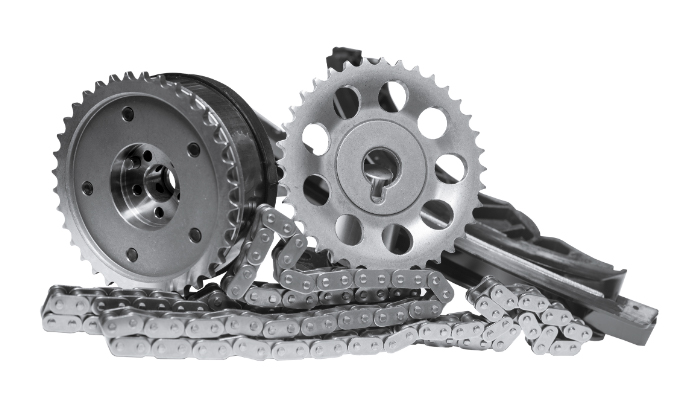Learn about the types of sprockets

The types of sprockets:
Chain sprockets
This is the most commonly used type of sprocket. They only apply to chains designed by rollers, which are connected to each other by pins.
Roller chains provide clearances that fit the sprocket teeth to transmit rotational motion. applications: transmission device applications.
Duplex sprockets

Depending on the specifications required, it may be a single hub or a double hub. Induction/flame hardened toothed duplex sprockets are also available.
Industrial sprockets
Industrial sprockets are typically made of graded stainless steel, mild steel, and cast iron because of their high tensile strength and efficiency.
Different types of sprockets can be manufactured by their original developers for higher efficiency. They are usually used with timing belts and have flanges to keep the timing belts centered.
Drive sprockets
Drive sprockets are a common type of sprocket. These typically provide shaft traction power. They have a smaller diameter.
Triplex sprockets
Triple sprockets are triple 18-tooth tapered bushing-style sprockets that use bushings. It is made of high-quality mild steel and has high-precision tolerances for optimal long-term performance. These sprockets consist of heat-treated, hardened teeth that further improve work and durability.
Shaft sprockets
It is a sprocket, usually made of welded steel, which can be one-piece or provide replaceable tooth segments for the drive and tail. They are commonly used in ash handling applications.
Simplex sprockets
It is separated by a gear in which the sprockets are not directly connected together and are separated by a pulley. They are usually made of teeth and smooth pulleys. Simplex sprockets usually don’t have flanges.
Single pitch and double pitch sprocket
Pitch sprockets are available in single pitch and double pitch sprockets. Single-pitch sprockets have teeth that allow the chain’s roller pins to fall into each tooth. Whereas the teeth of the double pitch sprocket allow the pin to fall into each gap. This type of sprocket is used in conveyor systems because they require precise product placement.
Drum sprockets
These sprockets are stronger, thicker sprockets that focus on reducing contact pressure through increased surface area. Teeth, plates, and hubs , used in a wide range to reduce wear. Drum sprockets are used in heavy-duty and industrial applications.
Steel split sprockets

Idler sprocket
It is used in situations where long lengths may cause the chain to slack, the drive shaft to be irregular, or the chain to bypass obstacles. The use of idler sprockets prevents chain whipping and uneven load distribution.
Bushed sprocket
These sprockets provide support, such as anchor bolts, to ensure that the flange is secured to the sprocket. Bushing sprockets are often required for heavy-duty lifting industrial systems.
Multi-strand sprocket
Multi-strand sprockets are used in situations where high torque and high power are required, or where two or more items are driven by a drive shaft. They are available in 40 to 160 chain pitches with normal, finished, tapered lock, or QD-type hubs.
Quick disconnect sprocket
Used for high working loads and high clamping shaft loads. The QD sprockets are connected with anchor bolt flanges around the perimeter.
Taper-lock sprocket
This sprocket uses cracks through the taper and flange to clamp the shaft. The tapered locking bushing is held in place by a set screw on the sprocket.
the types of sprockets ,manufactur,factory,OEM, supplier.
